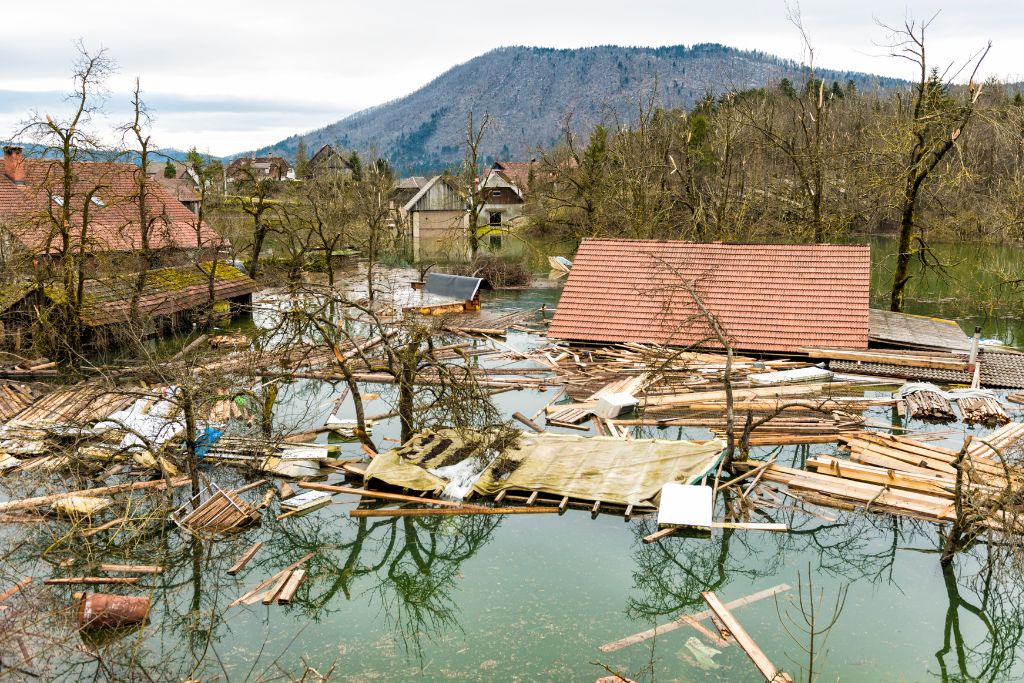As a society, we are strongly influenced by our ecosystem, and any change to that system can disrupt our lives, our cultural identity, and our social and economic stability.
––
6 Ways in Which Climate Change Impacts Humans
1. Impacts of Climate Change on Minority and Indigenous Cultures
Where people live and how they live, as well as the resources that are available to them, can significantly impact how they are able to handle the effects of climate change. Unfortunately, many communities of colour and indigenous peoples fall into the category of those facing the most challenges, including racial disparity and increased health risks.
Indigenous cultures, for example, heavily rely on the land and their environment for cultural traditions and practices, for food, and to make money. So when that land is being affected by climate change, it can drastically disrupt their way of life.
Indigenous and other communities of colour also tend to exist in more rural, low-income areas with fewer resources to help them survive when disaster strikes. These areas are more often affected by climate change, such as poorer air quality due to pollution. Because of the lack of medical infrastructure, these communities are also at higher risk of developing health issues that can be exacerbated by climate change.
2. Impacts of Climate Change on the World’s Poor and Developing Countries
Further adding to the notion that where and how someone lives can make them more vulnerable, the world’s poor and poorer countries are also more heavily affected by climate change. Understandably, people who live in poverty and impoverished countries will have a harder time coping with the changes that are occurring due to climate change.
The governments in developing countries do not have the finances and the resources to help their people and mitigate environmental disasters the way other cultures do. As such, the people that live in those areas suffer greatly from pollution and lack of natural resources and food, and they are at greater risk of developing illnesses and contracting diseases.
Young people and the elderly are also more vulnerable than anyone else because their immune systems and other bodily functions are not as strong and, therefore, cannot handle more extreme living situations.
3. Impacts of Climate Change on Urban Infrastructure
Urban development and infrastructure are crucial for the growth of any city and the well-being of its residents. So when the systems that make up the infrastructure are impacted by climate change, it can significantly impact development and the way people live their lives. The more populated and dense a city is, the worse it gets.
For example, extreme heatwaves can halt city-wide operations, lead to power losses, and put more pressure on aging infrastructure like sewer systems, city roads, and transportation systems. When this occurs, it costs the city money, can affect the cost of energy, air, and water, and can impact the overall wellbeing, comfort, and health of the people living in that area.
You might also like: 4 Commonly-Used Smart City Technologies
4. Impacts of Climate Change on Historical and World Heritage Sites
World Heritage sites, which are an important part of our global culture, are also threatened by climate change. They aren’t just historical and a part of our heritage, but they also play a role in the surrounding environment and ecosystem.
According to climate change experts, nearly every World Heritage site has come under some level of threat as a result of climate change. Greenland’s Ilulissat Icefjord, for example, is rapidly melting, and Yellowstone National Park is frequently experiencing shorter winters, which means less snowfall, shrinking lakes and wetlands, warmer rivers, and overall drastic changes that are negatively impacting local wildlife and habitats.
5. Impacts of Climate Change on Developed Economies and the Supply Chain
Economies around the world, but especially those that rely heavily on the supply and demand of goods and services, such as developed economies, are also being impacted by climate change. Cities that rely heavily on tourism services, for example, to support the local economy are seeing a drastic decrease in the number of visitors. Take Colorado, for instance. Shorter winters and reduced snowfall means not as many people will travel there to participate in winter sports activities as they used to, which means less money coming into the state and certain cities.
You might also like: The Uncertain Future of the Olympic Winter Games
Areas that are built around agricultural production are also starting to see an economic decline, such as California’s wine country, which relies on the production of grapes and maple syrup production in the Northeast. The more crops are affected in these areas, the more it will hurt the local economy.
As a whole, numerous industries are being impacted by climate change with supply shortages that slow down their production and impact their earnings. Though many companies and warehouses are making sustainable changes to compensate, there is still not much they can do if their primary product or materials to make their product is unavailable.
6. Impacts of Climate Change on Human Health
Worst of all is the detriment to human health. Minority cultures and poor populations are most at risk, but everyone everywhere is starting to feel the impacts of climate change on their health. Greenhouse gases are polluting the air, meaning everyone is breathing in more toxins. Microplastics and other kinds of waste and toxins are polluting our water. Crops and livestock are being affected, which results in food shortages. And rising temperatures and heatwaves make us more vulnerable to certain health conditions, such as heatstrokes and skin cancer.
Final Thoughts
With so much of our world and our culture being impacted by climate change, the question remains, can anything be done about it?
As terrible and devastating as the effects of climate change are and will continue to be, it is not impossible to reverse some of these effects and mitigate further damage. Doing so, however, will take immense effort. Climate activism and sustainability can no longer be viewed as just a problem for some and not for others.
Everyone everywhere who has the means to do so needs to start making more sustainable changes if we are going to have a future to look forward to. This includes individuals, as well as larger corporations and government organisations, which means we need to fight harder and continue pushing for change to put pressure on the companies and organisations that can have the most impact.
EO’s Position: The latest IPCC report clearly shows that the world is rapidly losing sight of being able to stay under the 1.5C limit of global temperature rise. We need to phase out fossil fuels immediately and scale up renewable energy generation to avoid the catastrophic impacts of climate change. With COP27 2022 coming up in November, governments must take steps to update their Nationally Determined Contributions (NDC) to stall global warming.
You might also like: 13 Biggest Environmental Problems Of 2022


















